We recently connected with KHRYSTSINA VYSOTSKAYA and have shared our conversation below.
KHRYSTSINA, thanks for taking the time to share your stories with us today What’s been the most meaningful project you’ve worked on?
The most meaningful project I’ve ever done was The Tree of Knowledge – my 9 meters high textile sculpture, designed and handmade during two years specially for the WOW-zone of the Belarus Pavilion at the World Expo 2020. This prestigious international exhibition was held during October 2021 – March 2022 in Dubai, United Arab Emirates. The actual size of the Tree of Knowledge is 8.8 x 5.5 x 5.5 meters (26,3 х 16,5 х 16,5 feet) and weigh is almost 1 ton (2205 lb.). All elements of the composition were made by hand. The textile surface of the art work is about 70 square meters (753,5 square feet) of artistic tapestry, which were hand woven by myself on a traditional hand-weaving loom. Likewise, the “textile threads” of the tree crown – with a total length of over 4000 meters (4375 yards) – were wound by hand.
The “Tree of Knowledge” carries an image of deep connection with the roots of our Motherland, its culture and traditions with our present and future. Hand weaving textiles give a sense of identity and involvement in the energy of unique and at the same time deeply traditional art. The creation of homespun textile from immemorial times has been an important part of the national culture of Belarus – hand weaving is a part of our cultural code and identity. The Tree of Knowledge reflects the idea of a deep connection between generations and a rethinking of folk traditions in contemporary culture.
The level of responsibility was extremely high, because the Tree of Knowledge should be the main art object in the Pavilion. I was a curator and author of the idea and concept, developer of the figurative spatial and coloristic solution, creator of tapestries and textile surface.
The Tree of Knowledge is the first largescale textile three-dimensional art object in the history of my native country, and it has no analogues in the World. This artwork was recognized as one of the most interesting art and cultural exhibits of WORLD EXPO 2020 according to the main media partner of EXPO-2020 CNN-Arabic.
The Tree of Knowledge won the Second price of World Expo Award among 217 pavilions in the nomination “Best elements and details” according to Exhibitor magazine (USA, 2022). It was the first time when Belarus won the price at this exhibition.
Returning to the starting point of the project, it was the day when curators of the Belarus Pavilion came to visit my solo exhibition in Minsk in May 2019. When they saw my woven textile sculptures, which reminded tree roots and cosmic plants, they said, “this is exactly what we need”. Some months later, I got a call from the National Center of Marketing that they invite me to be the author of the Three of Knowledge project. Been an artist it was important that they gave me a freedom to create unique concept and composition solution.
I started to work on this project in July 2019, before worldwide upheaval started and when the World was completely different comparing with nowadays.
Working on the concept of art piece, I paid attention on Belarusian pagan mythology, where tree is a symbol of family, fertility, increasing vitality, the renewal of the cosmos and carries the ideas of a vital beginning. The “Tree of Knowledge” from the Garden of Eden stands for the ability to consciously decide what is good and what is evil. The red color in this art work is a symbol of vitality, blood, family connections and love. The blue colors of the composition have the meaning of energy, speed, thought, unearthly purity and a clear mind. The trunk of the Tree of Knowledge contains the image of the energy of our Native Land. Blue ropes symbolize the energy, which rises from the roots up into our present and future – the tree’s crown. “Textile threads” creating a formal image of tree foliage is a symbol of mental connections between us, our Home Land and the Universe. It also can be considered as neural networks, the Internet, virtual reality, cosmos image. Cylinders as like fruits of the Tree symbolize people – children of the Motherland. They are all related to each other by the analogy how we are all related to each other and are in the same stream of life. This connection is also about the general spirit of the Nation where we are all working for the common good.
The creation of the Tree of Knowledge took me 2 years. One of the main challenges in this art work was that we needed to create a composition almost 10 meters high, self-standing only on one point of support like a sculpture. I invited to join the project artist Aliaksandr Dranets well known for his monumental public sculptures from bronze to work together on development of the figurative spatial solution, and to be responsible for creation of the supporting frame. Before the creation of a life-size art work we did a working model on a scale of 1: 5 (almost 2 meters high).
When the COVID-19 pandemic had started my team and me just finished all preparation works and we were ready to start the process of creation the art piece in natural scale. In March 2020, we learned that the opening of World Expo was postponed to October 2021. However, having such a responsible task ahead, it helped us not to despair and to look forward to a better future, which will definitely come one day.
The actual size of the Tree of Knowledge is 8.8 x 5.5 x 5.5 meters and weigh is almost 1 ton. All elements of the composition were made by hand. The textile surface of the art work is about 70 square meters of artistic tapestry, which were hand woven by myself on a traditional hand-weaving loom. Likewise, the “textile threads” of the tree crown – with a total length of over 4000 meters – were wound by hand. It took me six months to weave all tapestries. Over 80% of textile materials is a hand-dyed cotton (threads and ropes), other materials are wool, acrylic and mixed fibers threads. My assistant in textile surface works was my mother Liudmila Vysotskaya. The supporting frame is made of iron and steel metal by sculptor Aliaksandr Dranets and our assistant Yury Ulasik, who is a specialist of metal works. All detail of this huge masterpiece were prepared in Minsk and shipped to Dubai by pieces. Installation of the Tree of Knowledge in the Belarus Pavilion took almost one month of daily work.
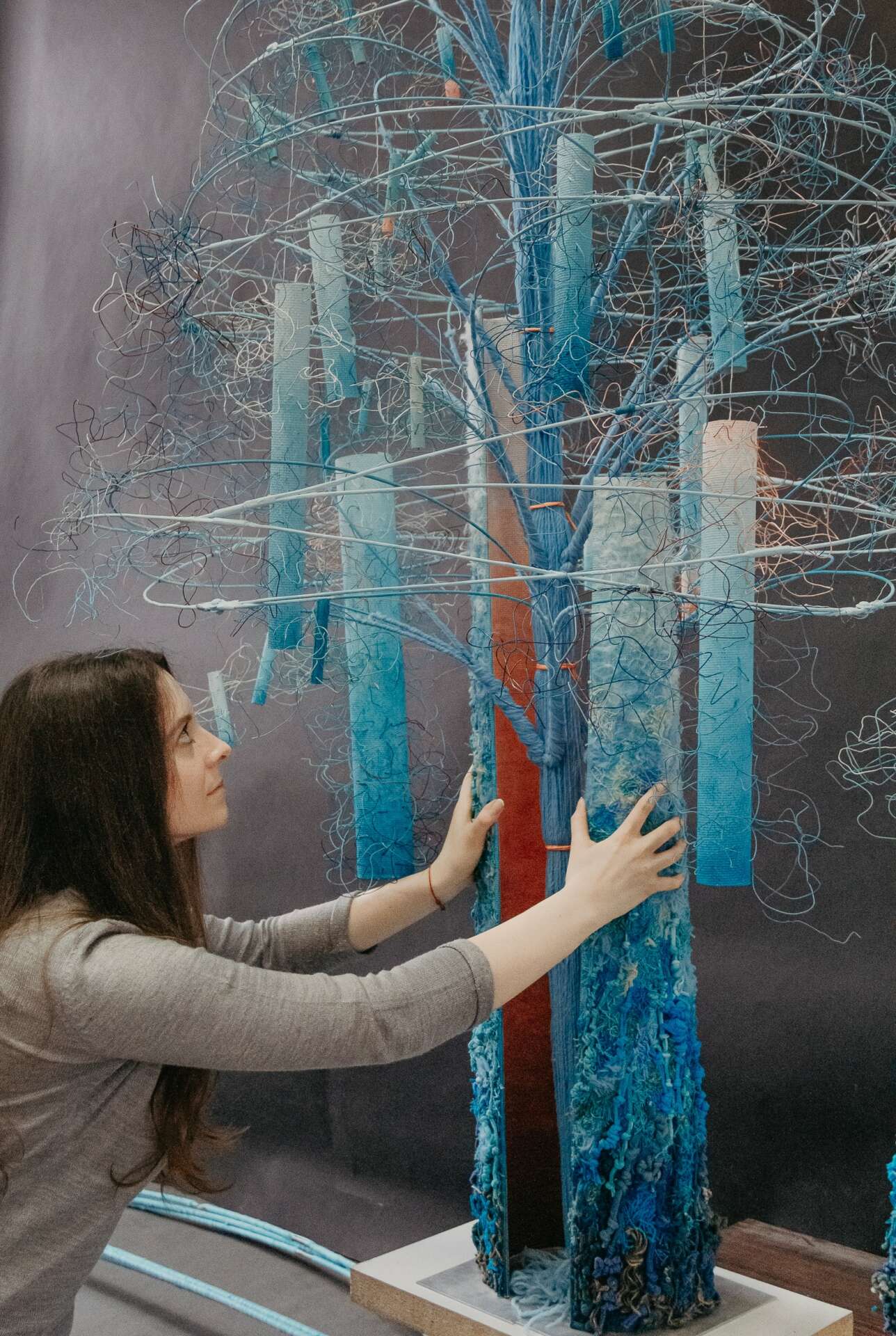
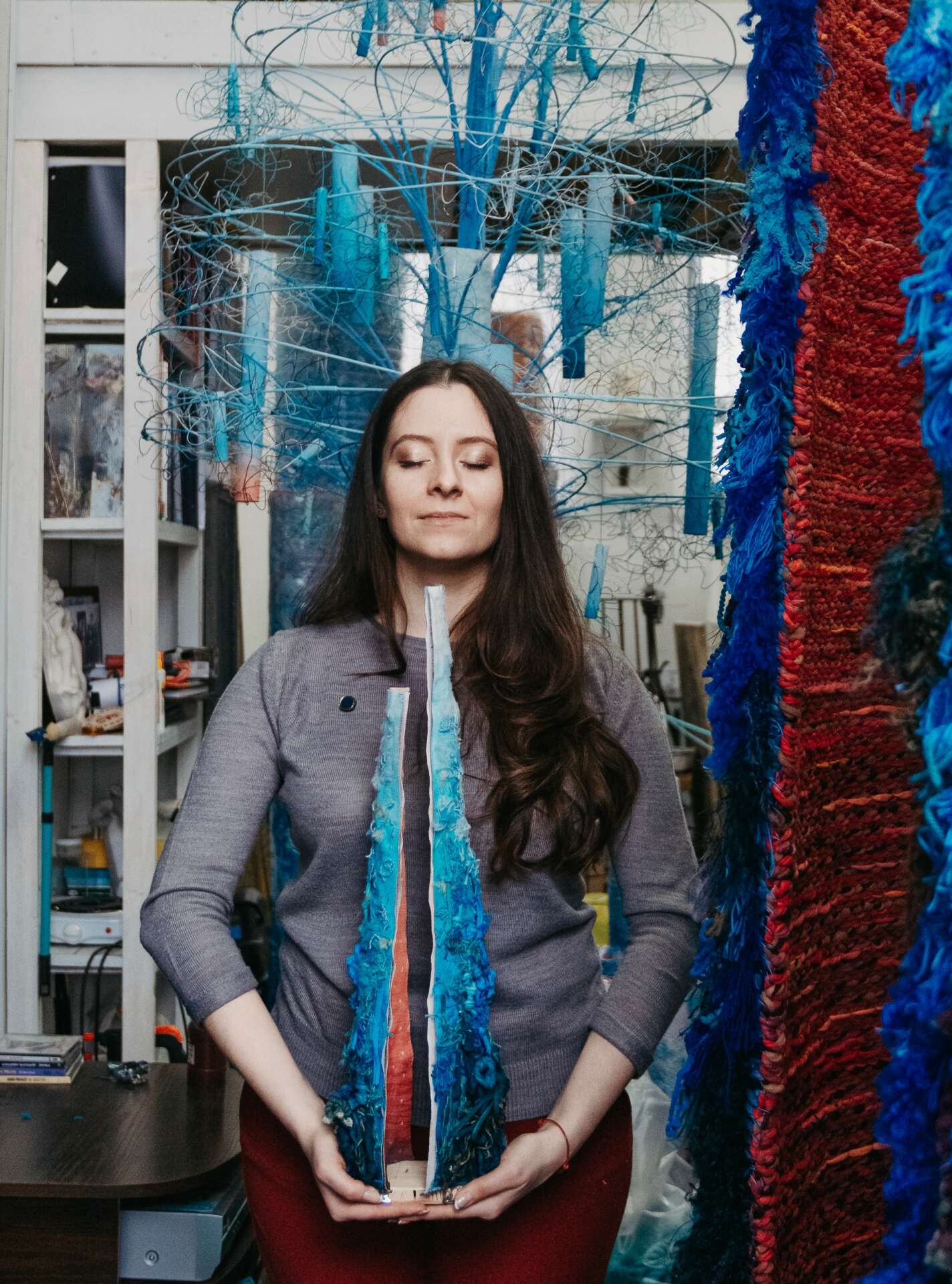
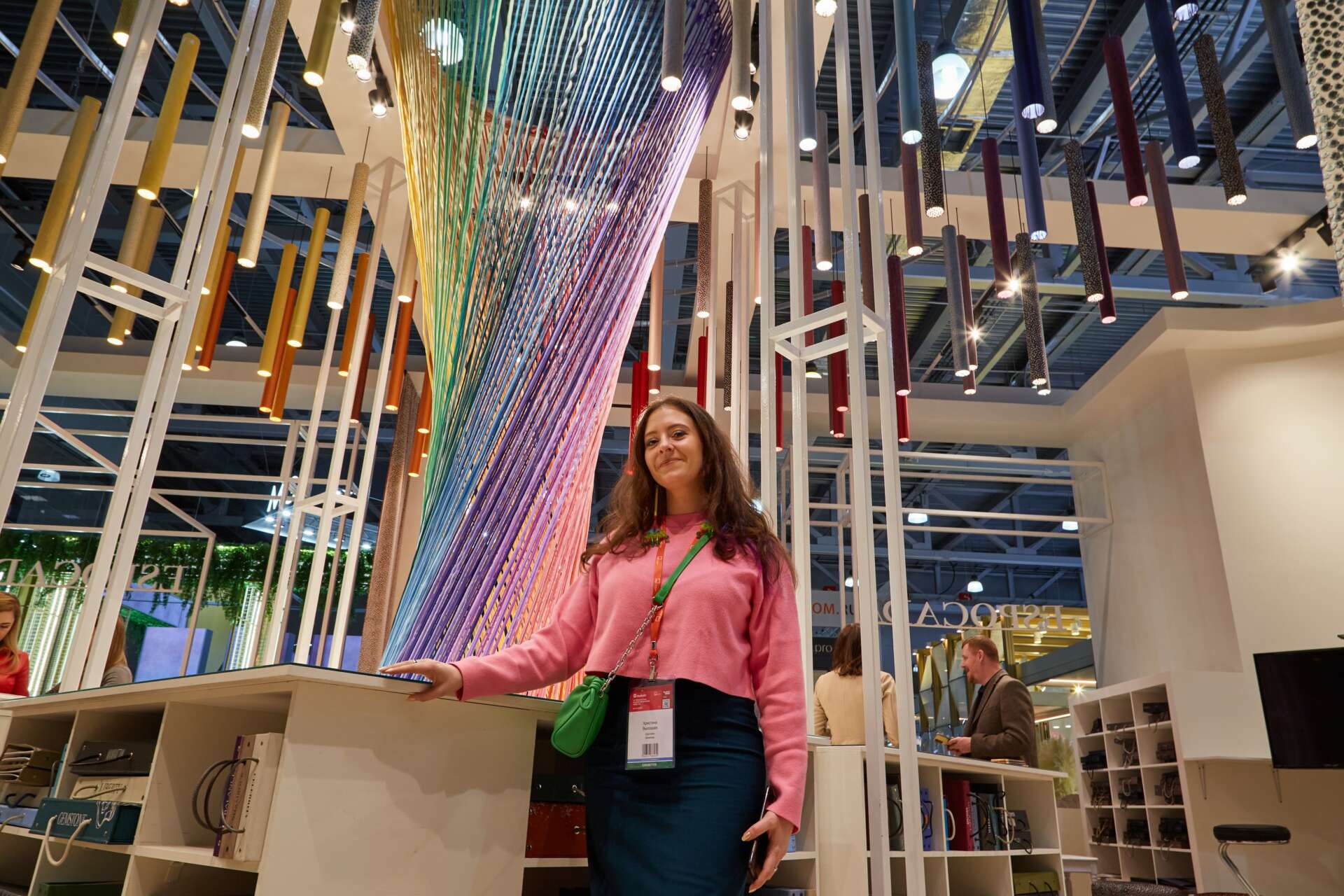
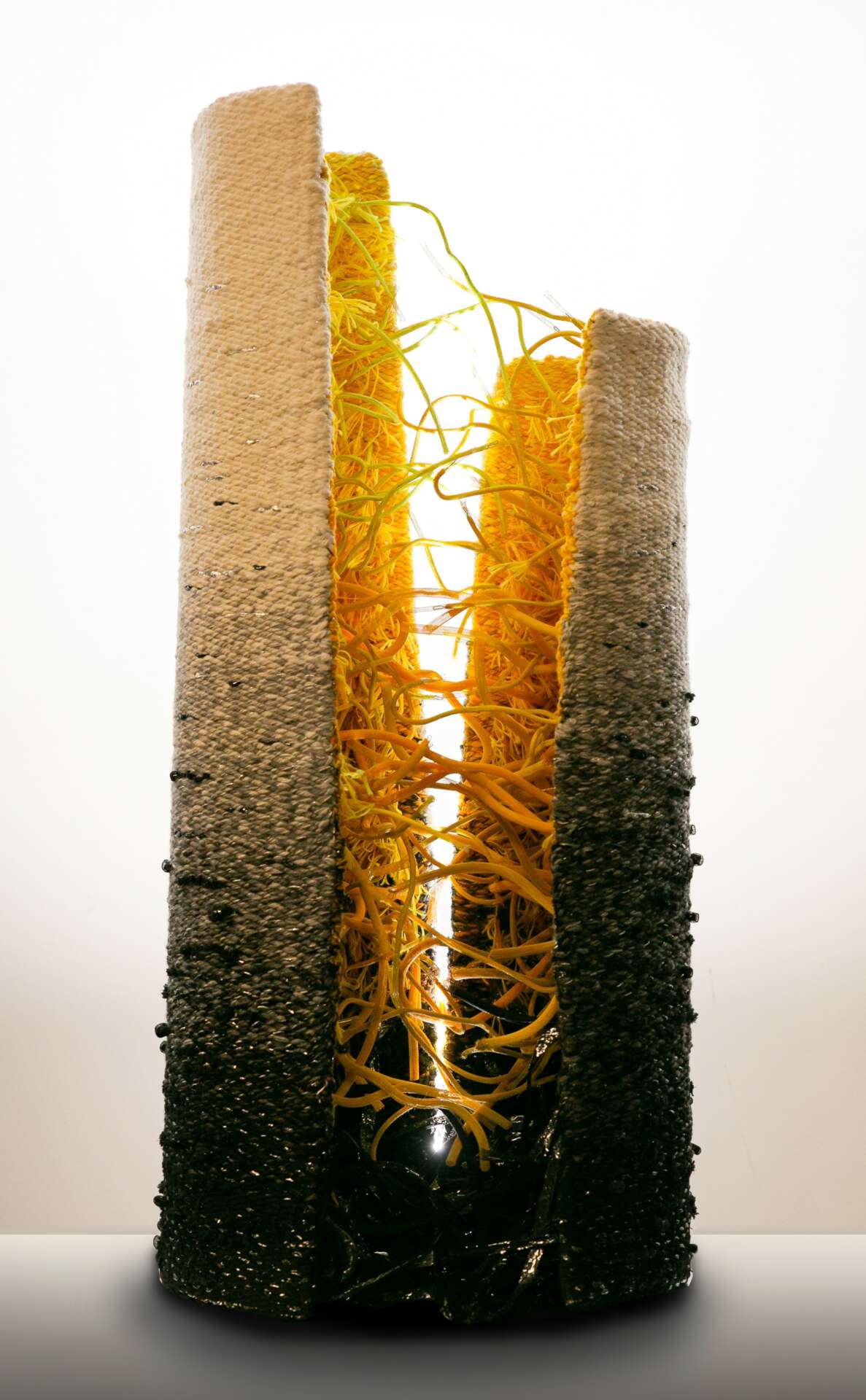
KHRYSTSINA, love having you share your insights with us. Before we ask you more questions, maybe you can take a moment to introduce yourself to our readers who might have missed our earlier conversations?
My name is Khrystsina Vysotskaya and I’m a textile artist, curator, educator and researcher based in Minsk, Belarus. I graduated from Belarussian State Academy of Arts (BSAA) in 2015 as a textile artist and art educator, after that I completed master’s degree course of BSAA in 2016 and completed PhD course in BSAA in 2021. I completed an internship at the Conservation Institute at the Vienna University of Decorative Arts in the “Textile Restoration” (Austria, 2016), and completed the weaving scholarship in Studio Aphorisma in Montespertoli, Tuscany, Italy (2023).
In my art practice, I mainly work in the direction of textile sculpture and art object. I create my artworks in multi-dimensional concepts in various themes, constantly exploring the field of hand weaving and experimental textile art, finding a balance between abstract minimalism and soft natural forms, pay important attention to material, texture, color, shapes relations and conceptual meanings. I’m inspired by possibilities of combining traditional, experimental and author’s techniques of hand woven textile art.
In woven art works I researches topics of the inner and outer world of person and their interaction, connection with the nature and the universe, family roots and generations, which touch upon the issues of existential philosophy and the cosmic principle.
I’m a laureate and winner of many national and international art competitions and my artworks have been presented on large group art shows in Belarus, Ukraine, Lithuania, Russia, Slovakia, Italy, Turkey, USA, Chile, and UAE. My solo shows were presented in Belarus and Italy.
In 2022 I was honored to become the 2nd Prize Winner of the WORLD EXPO AWARD in the nomination “Best Elements and Details” of World Expo 2020 (Dubai, UAE, 2022). Taking part in international shows I was the Finalist of the Pre-Bienal WTA (Chile, 2020), the finalist of the XI International competition of contemporary textile art Premio Valcellina: We (h) ave (Maniago, Italy, 2021) and got other awards.
Since 2016, I am working as a curator of art exhibitions. Member of the Belarusian Union of Artists (since 2016) and the International Association European Textile Network (since 2020).
This year I became the Dean of the Faculty of Design and Decorative and Applied Arts of the Belarusian State Academy of Arts. At the same time, I’m a associate professor in the field of textile art and design at the Department of Applied Arts and Costume in BSAA, where I’m teaching since 2015. Lecturer at the European School of Interior, Design and Decoration Design&Decor in Minsk, Belarus (since 2018).
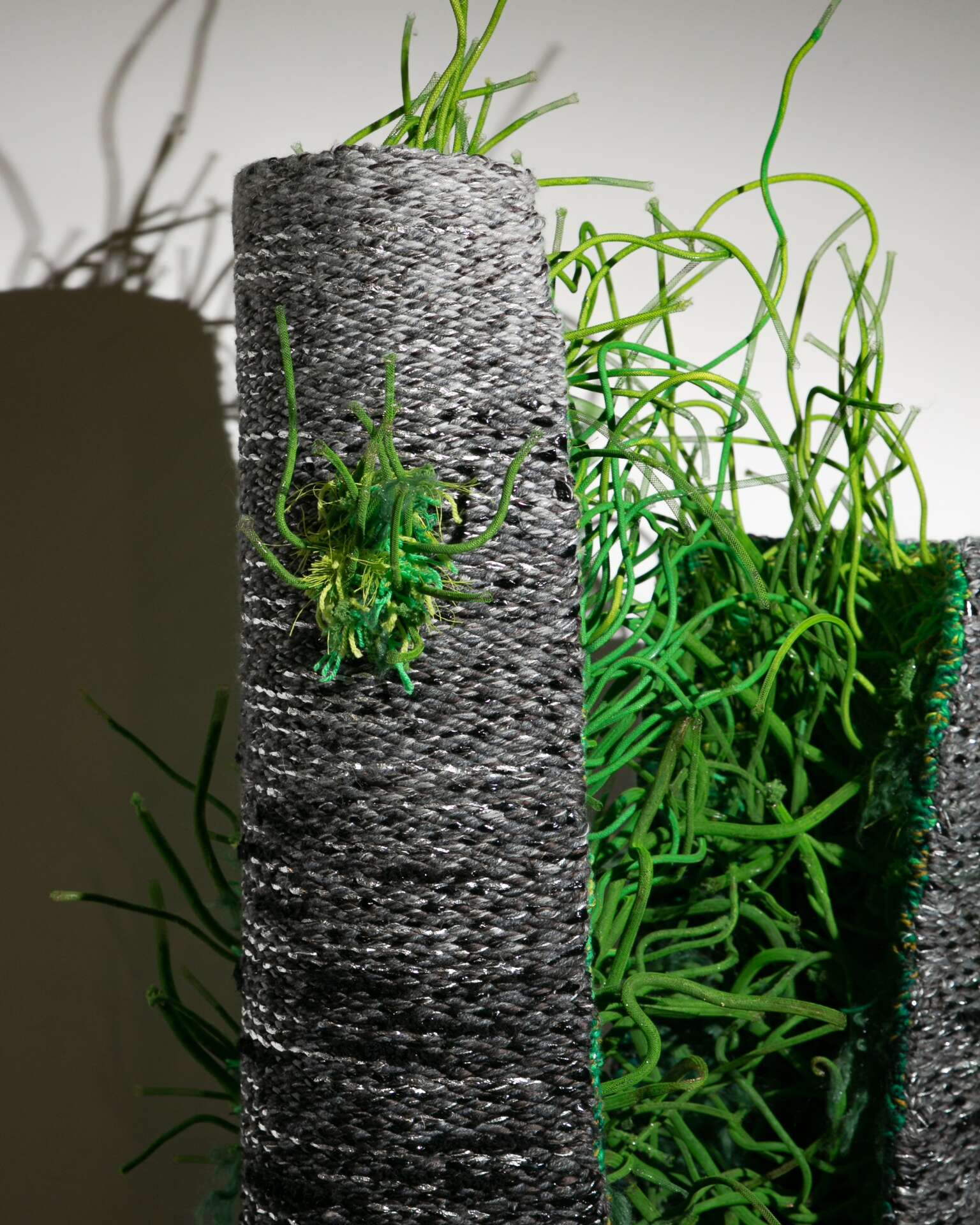
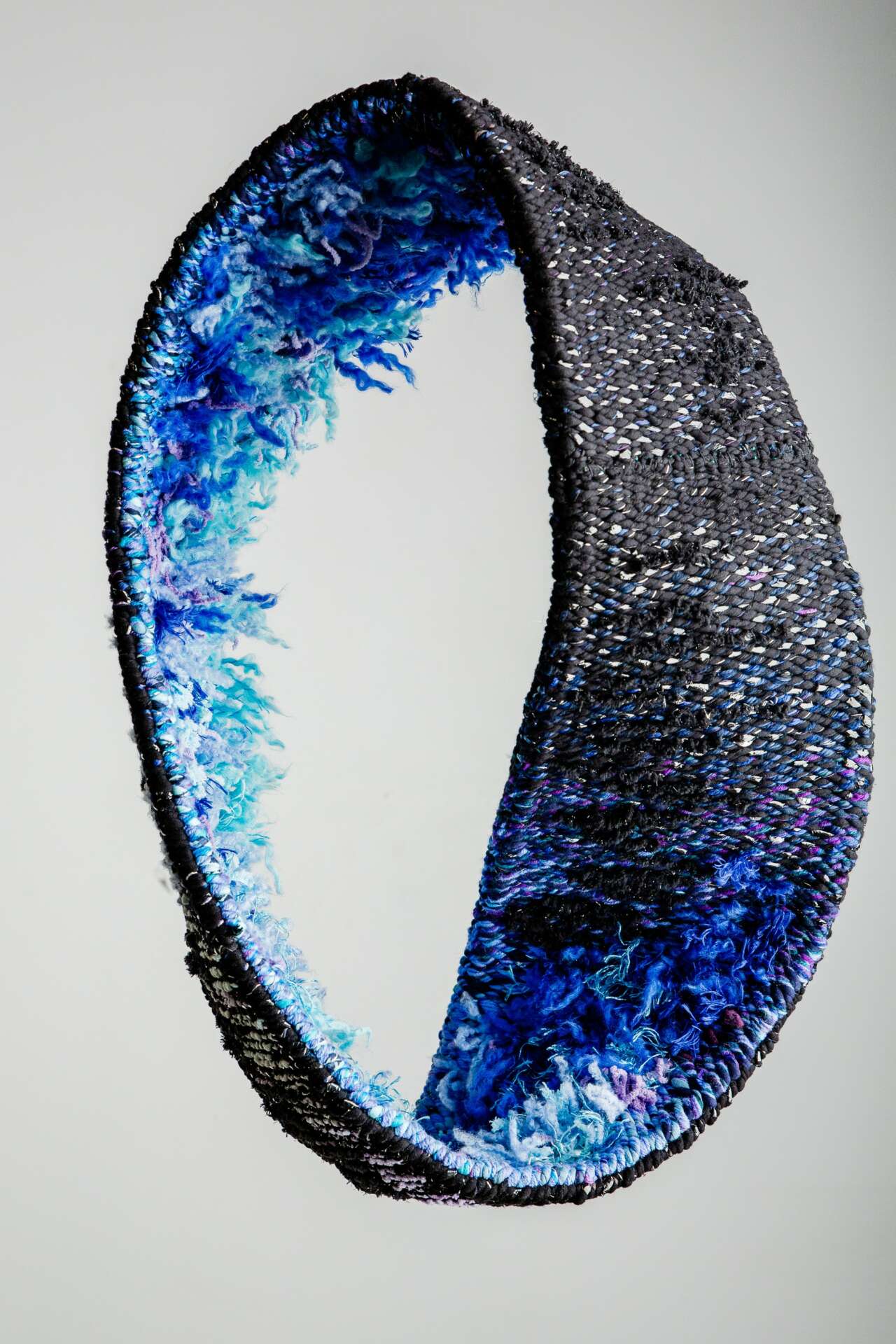
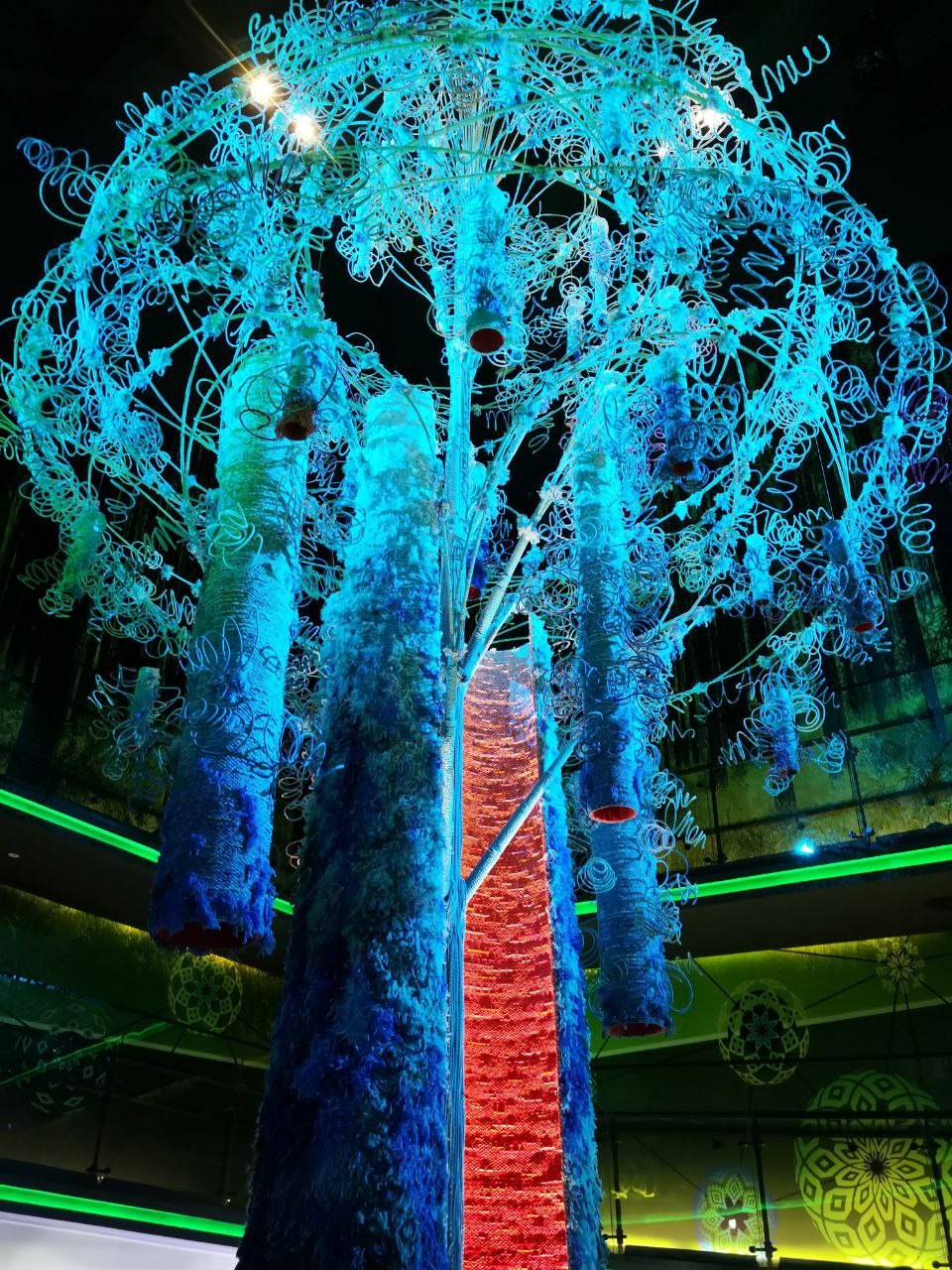
Can you share a story from your journey that illustrates your resilience?
Perhaps, reading my biography, it may seem that my path is predictable, understandable and everything works out by itself. But behind every line in the biography there is a lot of work.
From an early age I have been in creative journey. There are no artists in my family, my parents are engineers, but they tried to ensure that my sister and I were diversified. I am grateful to my parents for how they approached the issue of raising children in their time. My sister and I were always as busy as possible. When we came home after school, we ran to classes at a music school or art school, went to evening courses to learn foreign languages, went to dance classes, participated in competitions in physics, mathematics, and much more.
At the last year of high school I wanted to study physics and astronomy professionally at university, but then I decided that I would not forgive myself if I did not become an artist. When I told my parents that I would enter the Academy of Arts and study art textiles, it was a surprise for them – they did not know whether I would be able to find a job later and what I would do with this diploma. But they supported my choice. I felt that I wanted this, but I myself did not understand what it meant to be an artist.
When I started studying textiles, I started at zero. But I fell in love with this art direction with all my heart. I felt that what we study in class was not enough for me. In my country at that time there was still very little actual information, but the course was very deep in traditions and authentic technologies, what is also no less important. I started my own research. I traveled a lot to understand what contemporary textile art is like (and I have never stopped learning it).
From the first year of the Academy, I tried to participate in all possible competitions and exhibitions in the country and abroad. In any free time from studying, I volunteered in art projects, textile plein air projects, and made custom projects. By the end of my studies at the Academy of Arts, I achieved such results that I was already known in professional circles in the country and neighboring countries. Then the dean of our faculty suggested that I stay and teach at the department of costume and textile in the Academy. And since then I have continued to teach there.
At the beginning of my teaching career, I thought that teaching would not give me the opportunity to develop as an artist. However, it turned out that when you sincerely give energy to students, this energy returns to you many times over. I realized that I really love teaching, and it is important for me to show the younger generation how amazing and modern the art of textiles can be. There are huge opportunities in this direction.
At the same time, after graduating from the Academy, I began organizing exhibition projects, bringing together young textile artists and my students. Ten years ago it was a very unpopular art form. And I wanted to change that. I devoted all my free time to art, exhibitions, and social and cultural work. It was difficult to connect all this physically, but I was filled with so much energy and love for the profession that it was unstoppable.
At certain point I realized I can bring meaningful international exhibition projects to my country, and i started to work on this idea. I was the organizer in Belarus of the International Exhibition of Artists on Self-Isolation “Ongoing Conversation. Chapter 4. Drawn Together +”. Which where held in the National Center for Contemporary Art in Minsk in 2021. Author of idea and Curator: Soude Dadras (USA). This exhibition was dedicated to pandemic times and how art can unite people.
Together with Manuel Wandl (Austria) we were authors of idea and curators of the Belarusian-Austrian exhibition of artistic textiles “Windows & Bridges” in City Art Gallery of Leonid Shchemelev in Minsk (2022-2023). The project was talking how important is to stay connected in times crisis, and we need to construct bridges and not to burn them.
So as you see, the life of an artist is a constant search. This is research into the material in which you work. This is a search for a problem that worries you, and what you want to tell the world with your art. It is a dialogue between artist and viewer through a work of art and exhibition project.
The artist has a keen sense of reality and reflects in his works our reality and what worries society. An artist is also able to anticipate the future. And it is very important to share art. Show exhibition projects to different segments of society. Art makes us think and feel, it makes us human.
In my work, I realized that the main thing is not to give up, to believe in yourself and what you are doing and to continue to work, no matter how difficult the situation may be. It is very important to be open to the world and be willing to cooperate. And as an artist you never know which exhibition will give you a new project, new opportunities. Everything is connected and the main thing is to love what you do and keep moving forward.
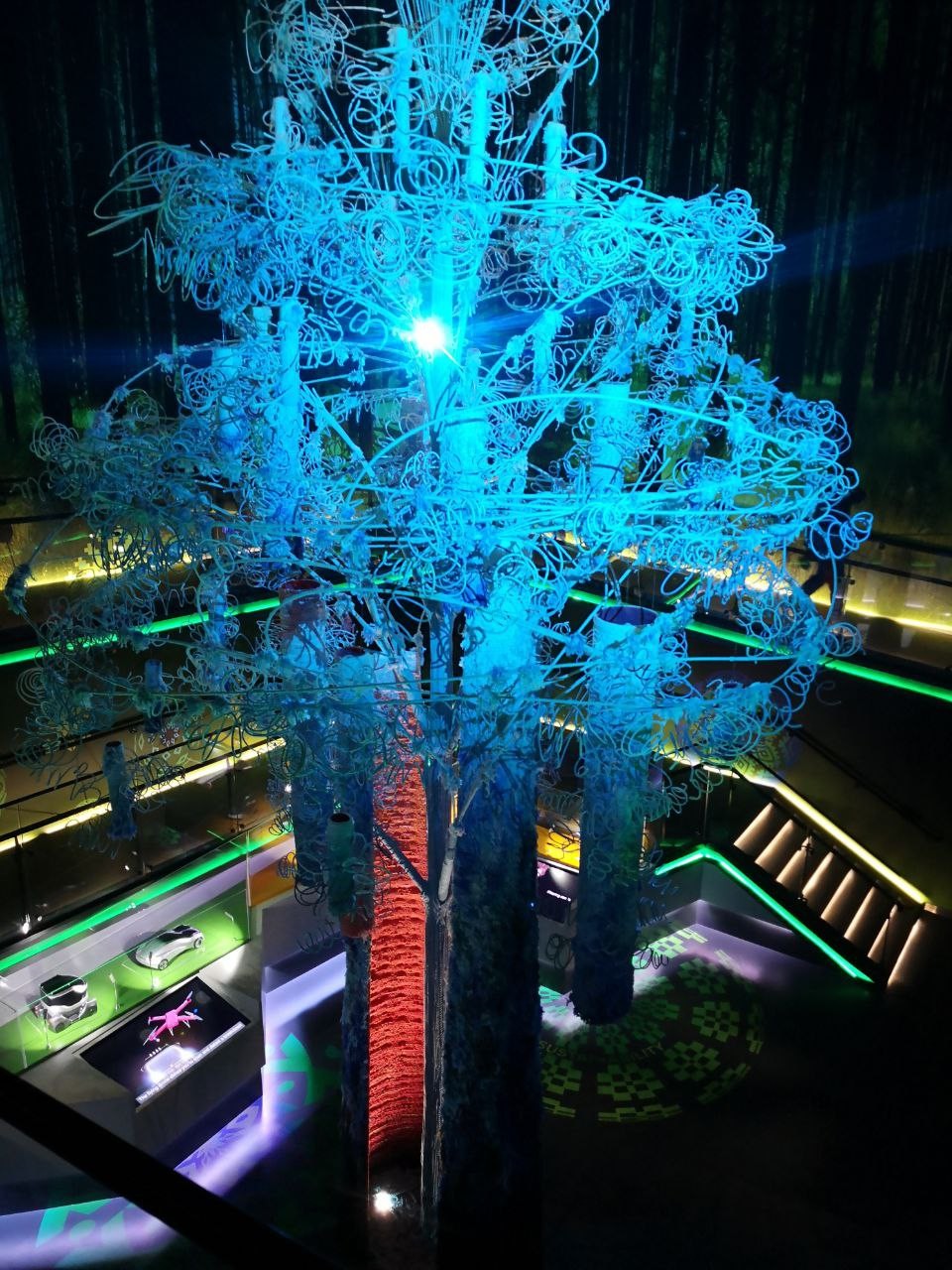
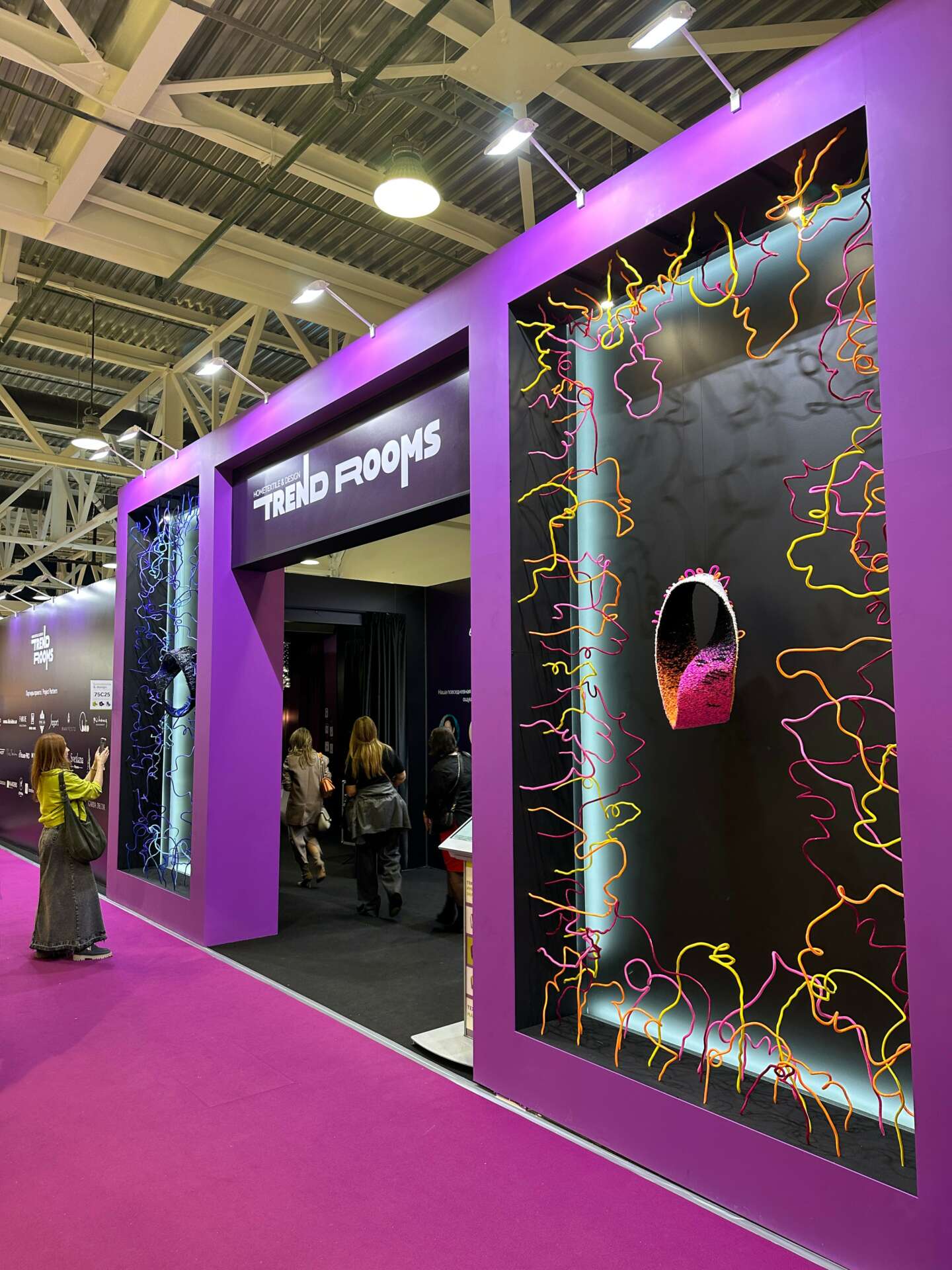

Do you think there is something that non-creatives might struggle to understand about your journey as a creative? Maybe you can shed some light?
When I tell people who don’t know me and don’t know about my profession that I’m a textile artist and create soft sculptures and installations, I see confusion on their faces. There is a reaction “why is this necessary”, “why spend so much time on weaving”, “I don’t understand abstraction”, etc.
Textiles surround us from birth to the very end; it is the closest material to the body. Tactile, soft and warm textiles provide very good energy.
Many people don’t realize that textiles are everywhere – this is our clothing, this is interior decoration, furniture upholstery, curtains, these are modern smart fabrics and nano fibers, industrial textiles for reinforcing car bodies and sound insulation. If we consider fiber art as a “philosophy” of worldview, then fiber is the neural connections in our brain, the tissues of our body, the Internet, string theory and quantum entanglement… we can go on and on.
In weaving at a technic for creating art piece I see a connection with my roots, with my ancestors and the land where I was born. Where I come from, before the mid-20th century, every house in the villages had weaving looms and every woman made her own fabrics and used them to sew clothes for her family. Now, in the modern time of digital technologies and virtual realities, we are beginning to acutely feel how important the energy that passes through our hands is. And in hand weaving, each thread passes through the hands of the master. And the tactility of textiles brings us back to the beauty of real material world.
For myself, I discovered textiles in the direction of exhibition design, when the goal of an art installation is to attract the viewer’s attention. Be it an exhibition pavilion or a showcase, or interior design. But it still is a conceptual high quality art work. After the great success of the Tree of Knowledge project at World Expo 2020 in Dubai I started to work more in this field. For example this year I’ve been invited by textile company Espocada (Eustergerling Textile Group GmbH) to develop an artistic solution of they pavilion at the International Exhibition of Building and Finishing Materials MosBuild 2023. My project “Tree of Life in Spectrum of Colors” for Espocada won in the nomination “Best Stand Design”. The last project I worked on was the art installation “Dark Matters” for the entry zone of the conceptual solutions area “Trend Rooms” at the International Exhibition Home Textiles & Design (2023).
We live in an age of visual space and information overload. When a work of art makes a passerby stop, have an aesthetic and tactile experience, immerse itself in a concept and think about deeper meanings, this is very valuable. To touch the world of soul, which stands above practical reality. Art makes the imagination work and the mind think. And also, it’s very beautiful. Textiles are a beautiful art.

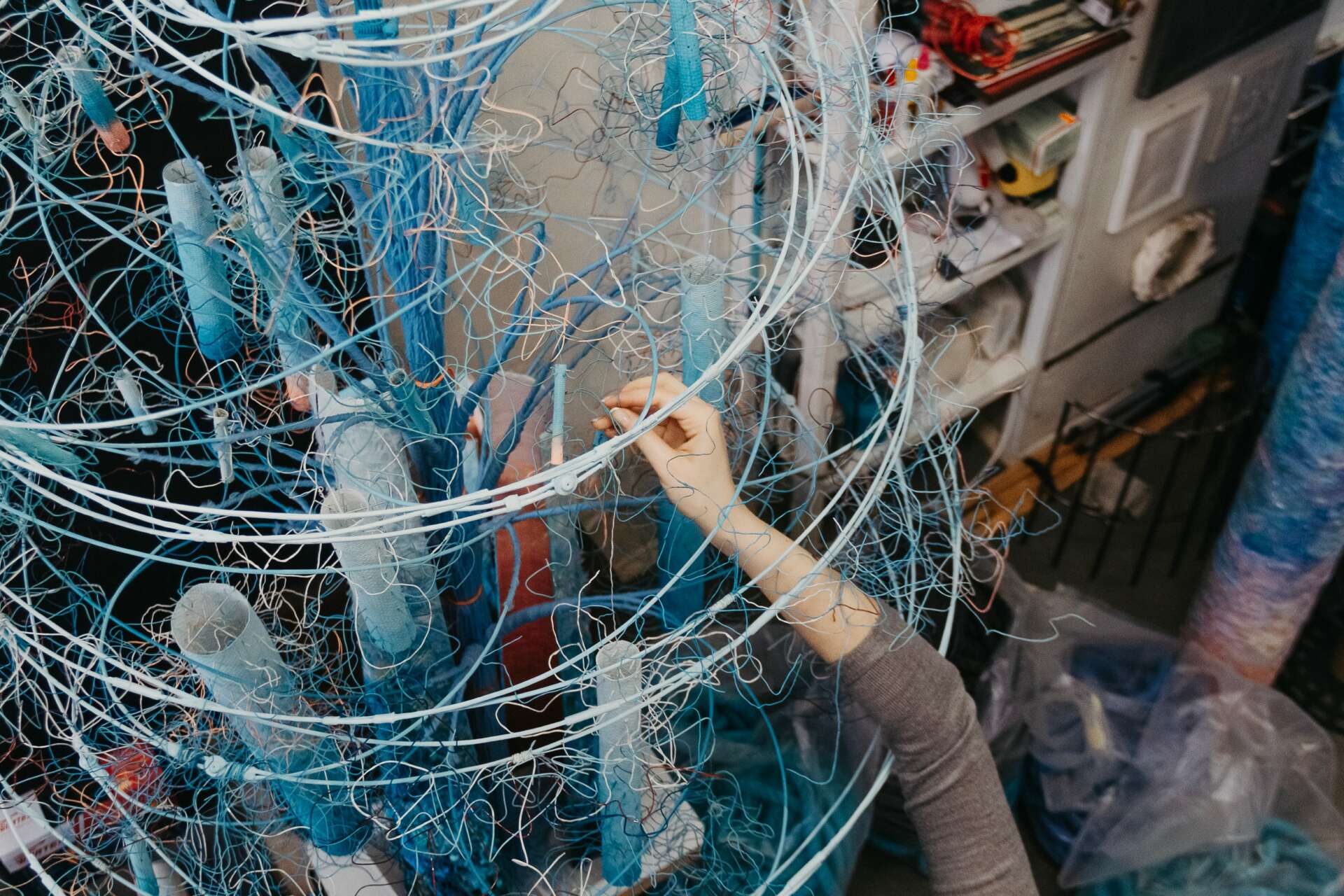

Contact Info:
- Instagram: khristina_vysotskaya
- Facebook: https://www.facebook.com/cristina.vysotskaya/
- Linkedin: https://www.linkedin.com/in/khristina-vysotskaya-658895101/
- Youtube: www.youtube.com/@khristina_vysotskaya
- Other: Email: [email protected]
Image Credits
Vitalina Voroshkevich @vitalina.fox Aliaksander Kazharski @photographer_kazharski


